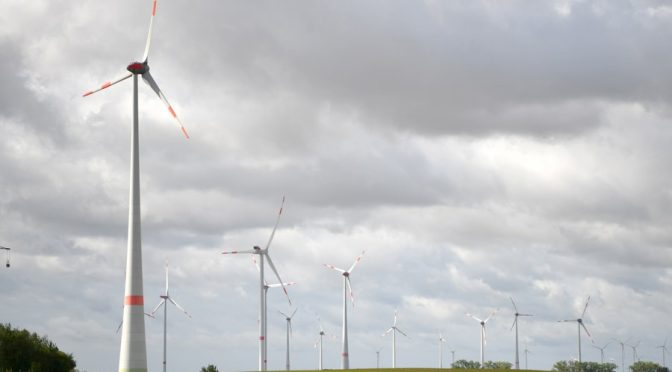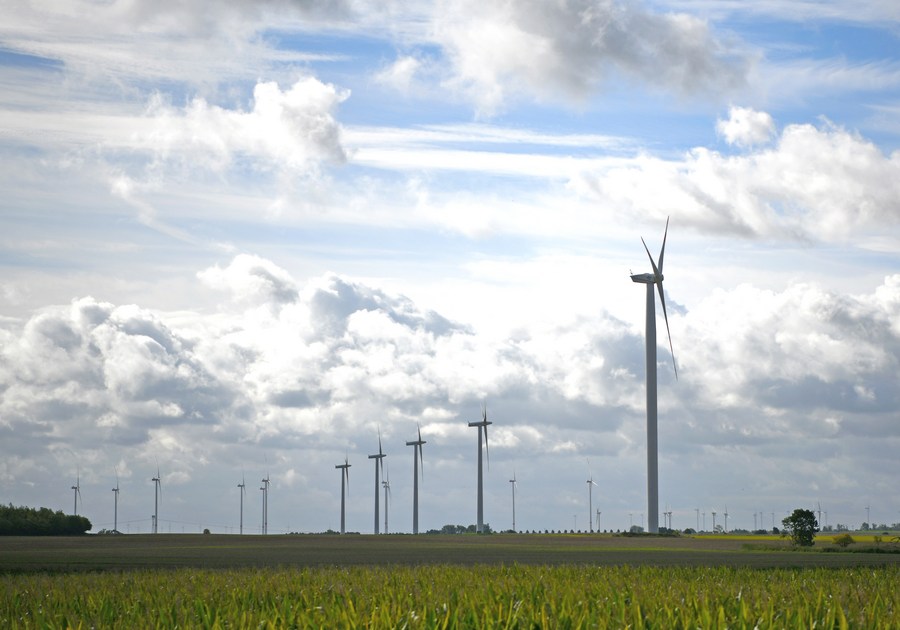Wind energy once again replaced coal as Germany’s most important source of electricity, according to preliminary figures published by the Federal Statistical Office (Destatis) on Wednesday.
Despite a slight decrease in electricity generation compared to the same quarter of last year, wind power reached a share of 32.2 percent in Europe’s largest economy in the first quarter of 2023.
“The clearly defined expansion targets, the clear priority of renewables will accelerate the trend already visible in the last four years,” Wolfram Axthelm, managing director of the German Wind Energy Association (BWE), told Xinhua on Wednesday.

Wind turbines are pictured in Brandenburg, Germany, Sept. 15, 2022. (Xinhua/Ren Pengfei)
Germany aims to reach a renewable share of 80 percent in the electricity supply by 2030, five years ahead of the European Union (EU) target. The government has repeatedly emphasized that onshore wind energy is to play a key role in achieving this goal.
Robert Habeck, minister for economic affairs and climate action, presented a broad-based strategy for onshore wind energy in late May to put the transition on track. “We need more than a fourfold increase in the current rate of expansion,” he said.
Conventional energy sources, such as coal, natural gas and nuclear energy, still accounted for more than half of Germany’s electricity production in the first three months of the year, according to Destatis.

Wind turbines are pictured in Brandenburg, Germany, Sept. 15, 2022. (Xinhua/Ren Pengfei)